Light rail excursion around Frankfurt, 20 March 2010 - part 2
Well, having formatted the remainder of my photos I would now like to show you the second round of images from Saturday's light rail excursion ![]() . The previous part ended at Oberursel-Hohemark, this being the northern terminus of the U3 line. Next, though, our schedule called for us to return to Heddernheim once again, there to reverse direction and head to Ginnheim, which is the northern terminus of the U1 line.
. The previous part ended at Oberursel-Hohemark, this being the northern terminus of the U3 line. Next, though, our schedule called for us to return to Heddernheim once again, there to reverse direction and head to Ginnheim, which is the northern terminus of the U1 line.
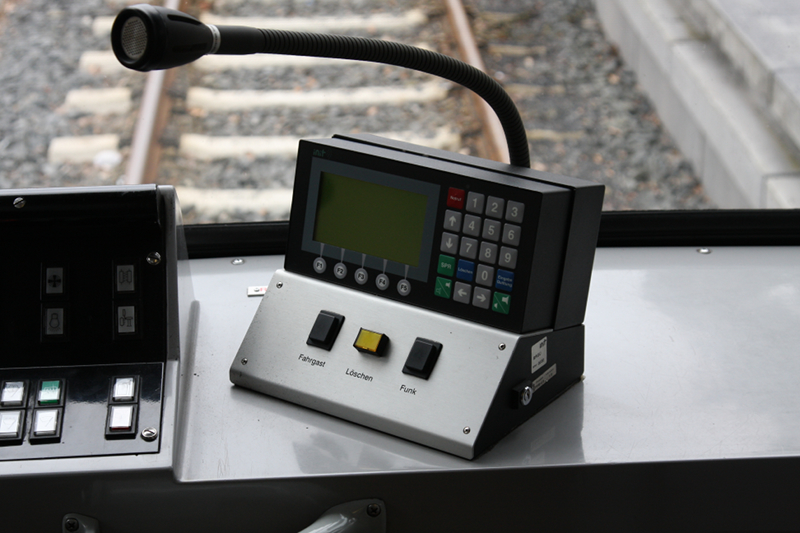
While waiting for our departure at Hohemark I took a detail shot of the "IBIS" terminal, this being the onboard device for a computer-controlled train monitoring and dispatching system frequently used on light rail and tram systems in Germany. This system can automate signalling and routing to a certain degree, except in special situations when human intervention is required. Part of this system are optical beacons installed on both the car roofs and along the track which serve to allow trains to be located, and indeed transmit certain types of information back to the train.
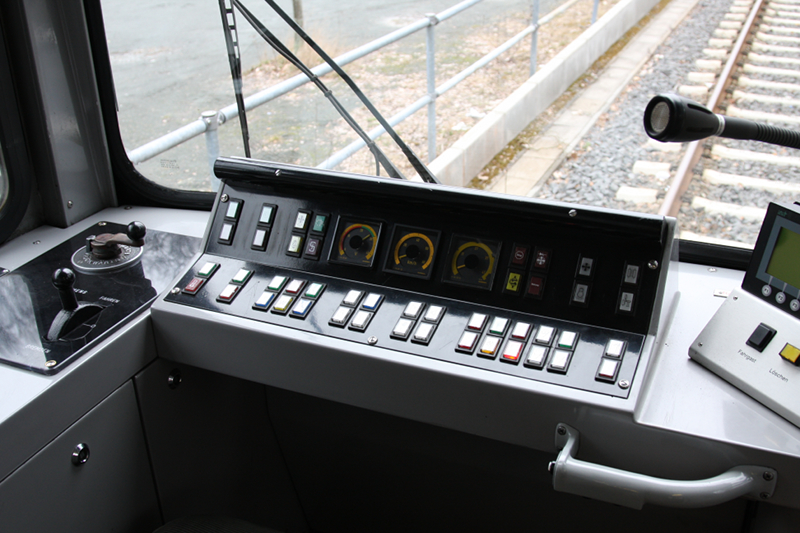
This is how the driver's panel looks on the U3 type. The crank to the left is the reverser, with the power and brake lever next to it. The three dials in the upper part of the panel are a battery voltage indicator, speedometer, and an arresting brake application and release indicator. A dead man's pedal is located to the left in the footwell.
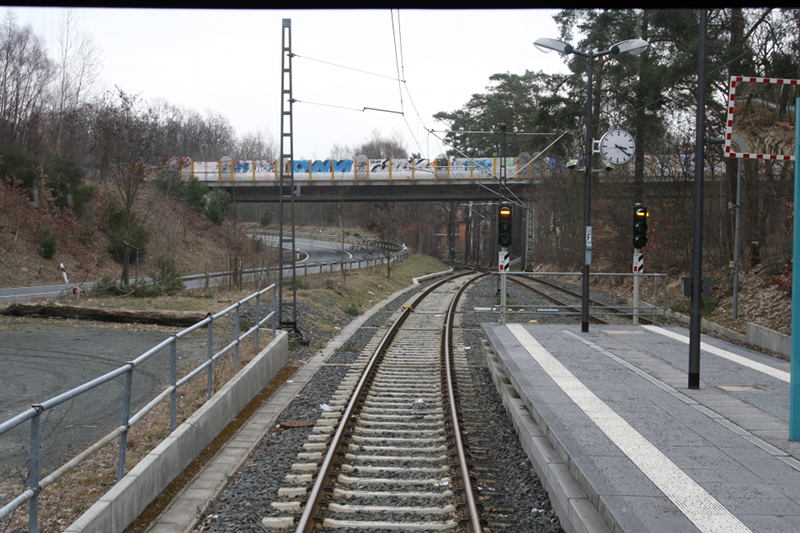
These signals are usually known as the "F" type over here and are solely used on light rail or tram systems - or, to put it differently, all rail systems governed by the BOStrab (Tramway Construction and Operating Rules) rather than the EBO (Railway Construction and Operating Rules). Both are showing a F0 aspect here, meaning "danger". F1 would be a vertical bar and mean "proceed straight", F2 a bar slanted to the right and meaning "proceed right", F3 a bar slanted to the left and thus meaning the opposite; F4 is a single round light meaning "expect danger"; F5 looks like a white triangle put on its tip and is a permissive signal allowing a train to proceed while observing right of way rules; and F7 are three small while lights arranged in a triangle put on its tip and known as a backup signal, which is shown in case of a signal failure.
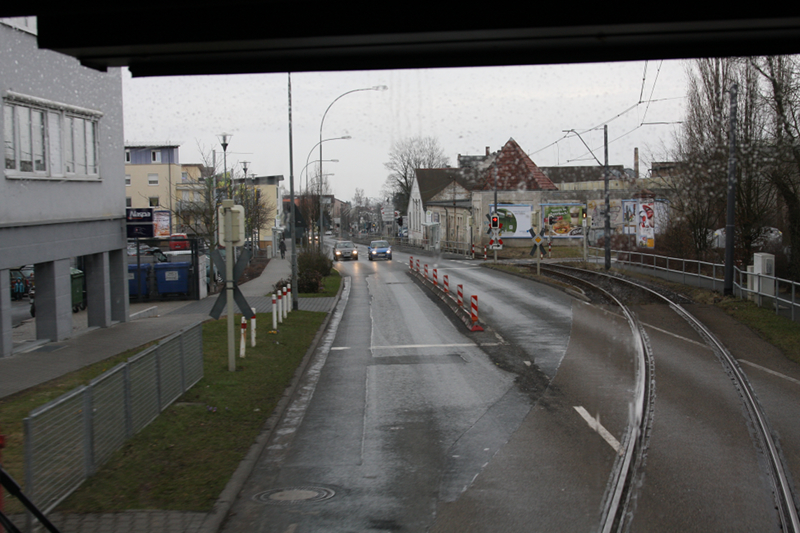
Crossing Hohemarkstraße again...
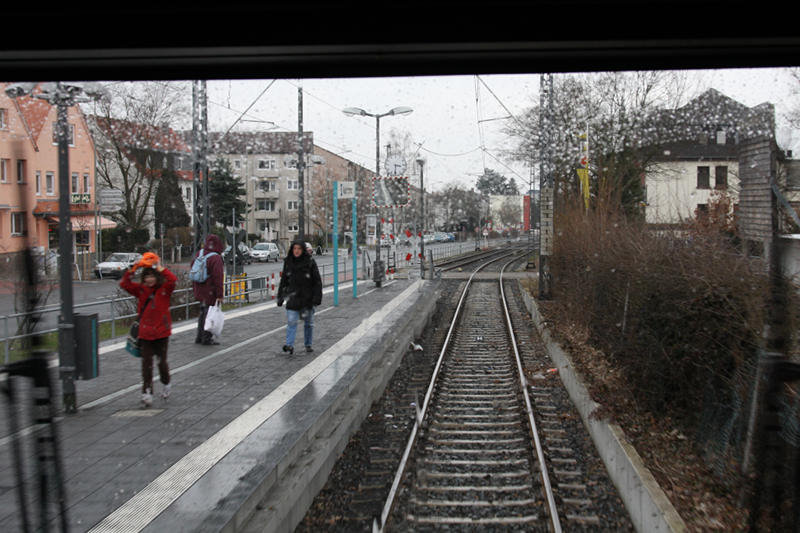
...and disappointing some passengers who mistook us for a scheduled service again.
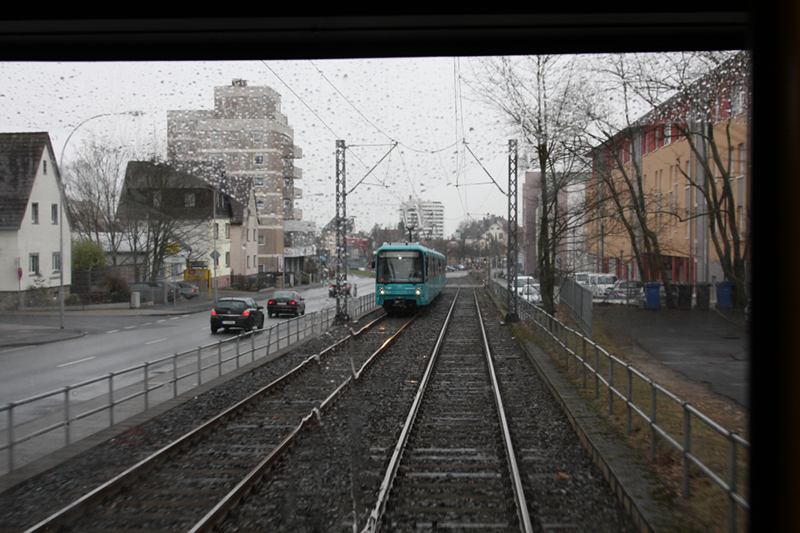
Approaching the centre of Oberursel, a pair of U5 type cars was heading up to Hohemark...
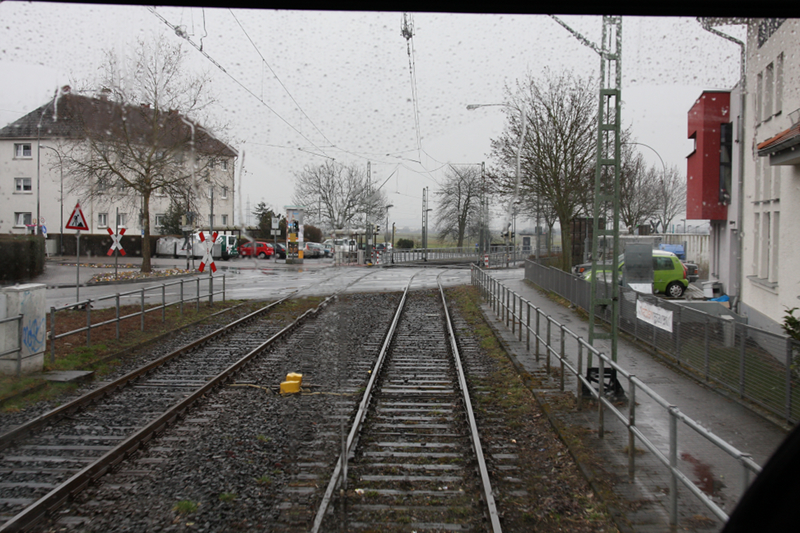
...and yet another level crossing which would take us to the other side of Frankfurter Landstraße at the edge of the city.
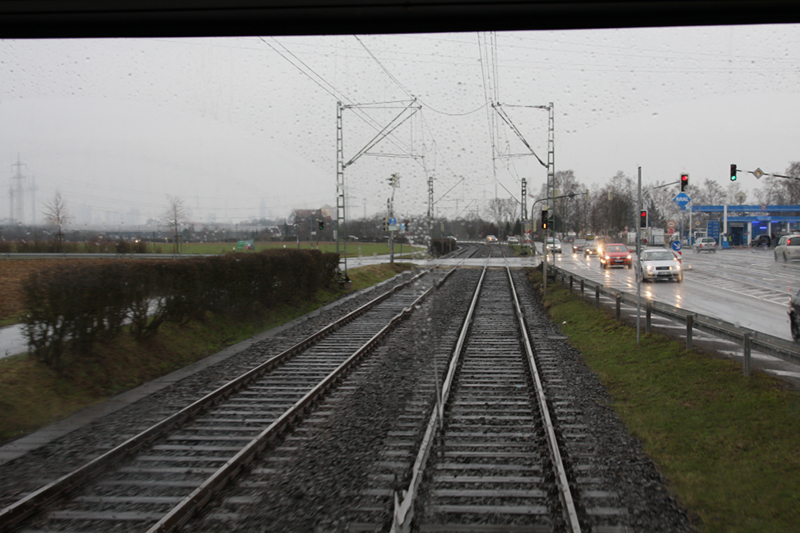
Speeding through the rain between Oberursel and Frankfurt. The road to the left goes to the borough of Kalbach.
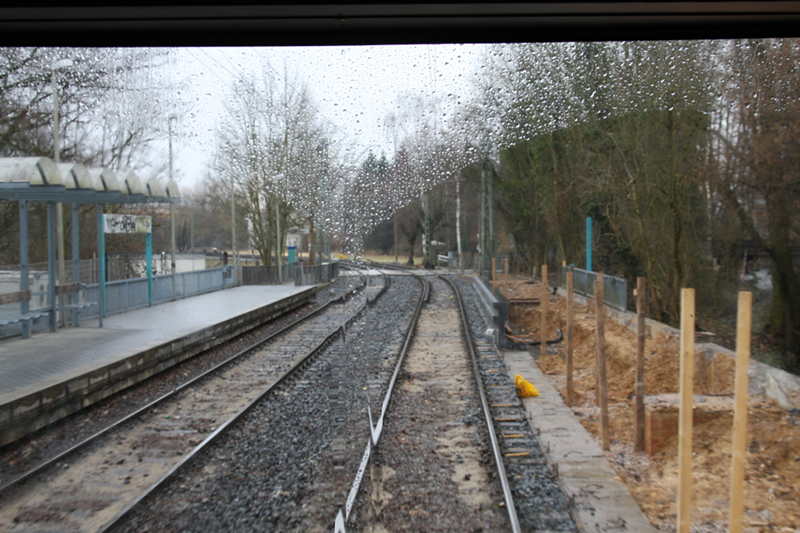
The down platform at Wiesenau is being rebuilt at this time.
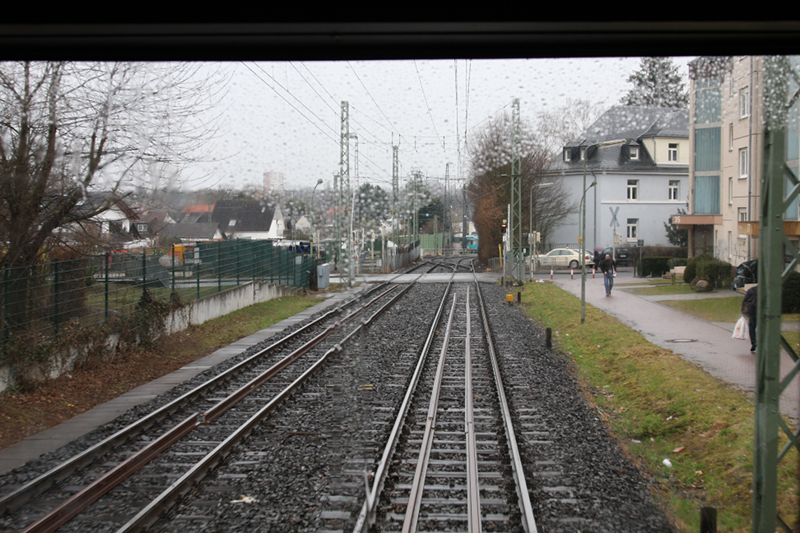
The level crossing at Hessestraße, just north of the Heddernheim depot. This is one of the crossings actually guarded by barriers.
Having arrived on platform 3 at Heddernheim again we now had to split the train for the next leg to Ginnheim - the reason for this being that we would change to the tram network at Ginnheim, and only single cars are permitted on this branch of the tram network, which is served by line 16 nowadays. The second car would follow us about ten minutes later.
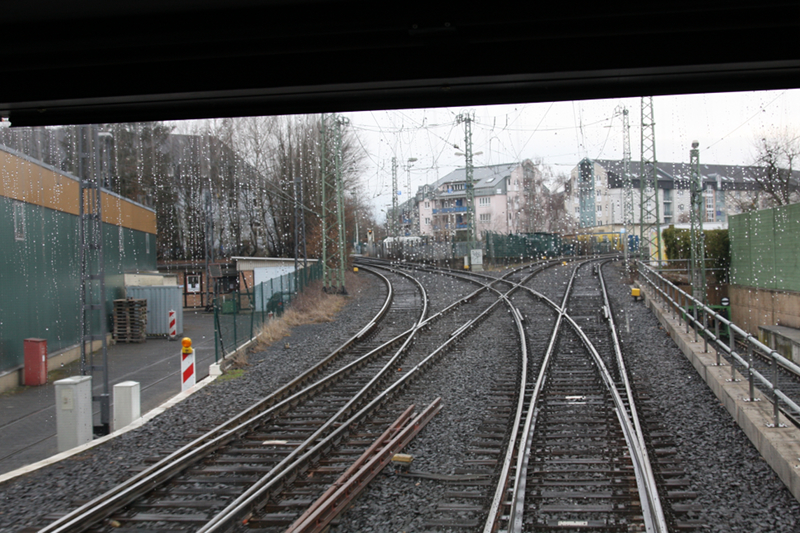
Turning left through the junction at Heddernheim...
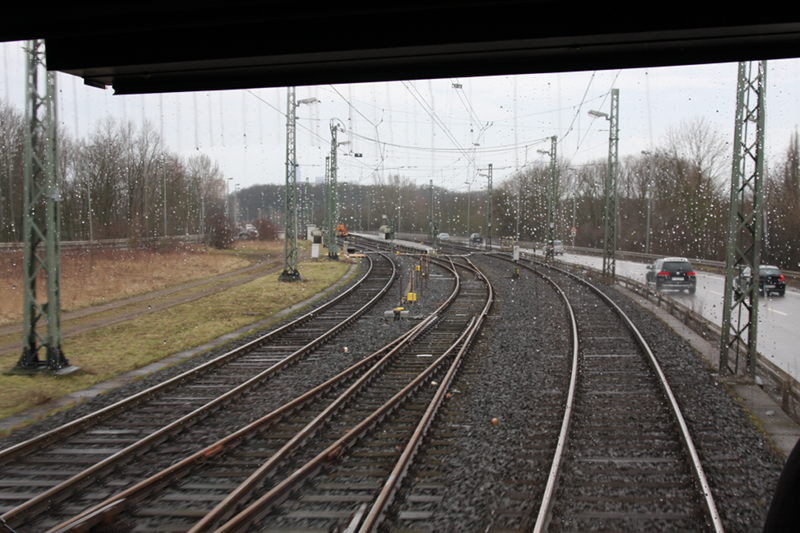
...we then passed through the underground station at Nordwestzentrum and sped on along Rosa-Luxemburg-Straße. Seen in front is the stabling area at Römerstadt where a number of trains for the U1 line are stored overnight.
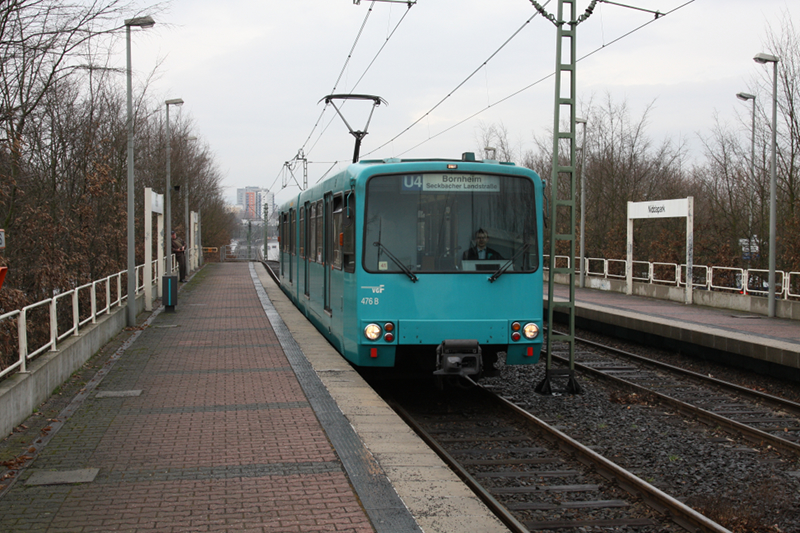
Niddapark is a station more or less in the middle of nowhere, but still suitable for a photo stop ![]() .
.
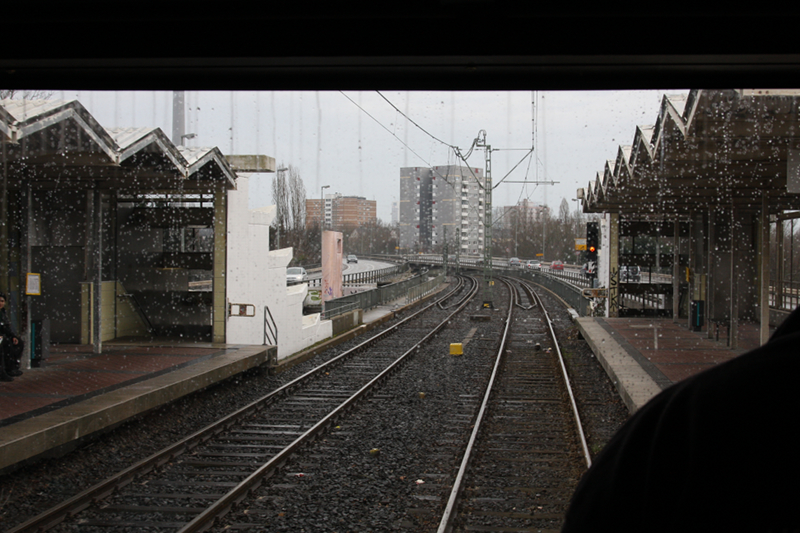
The same station, seen from the train. The signal was showing a Hp 3 aspect (which does not exist in German railway signalling, I should add) allowing us to proceed at 20 kph.
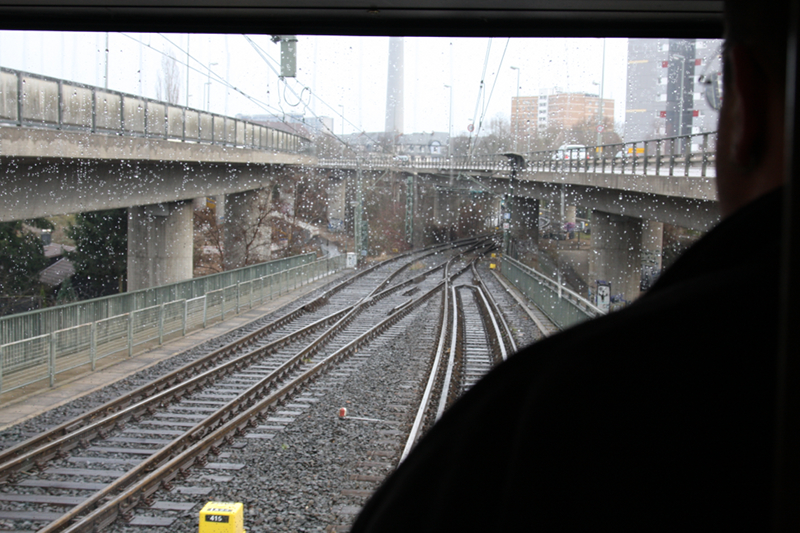
Descending the ramp into the terminus at Ginnheim. Unlike scheduled services on the U1 line we would then be routed over to the tram part of the station.
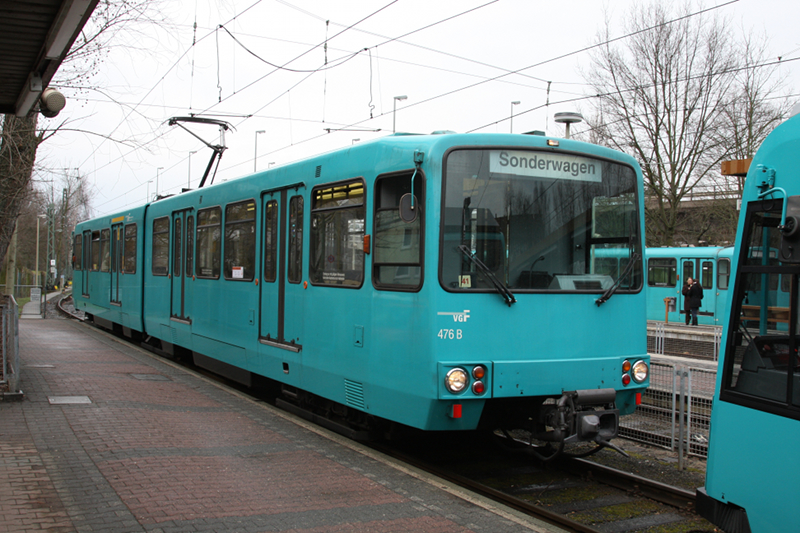
And there we were, right behind a R type tram...
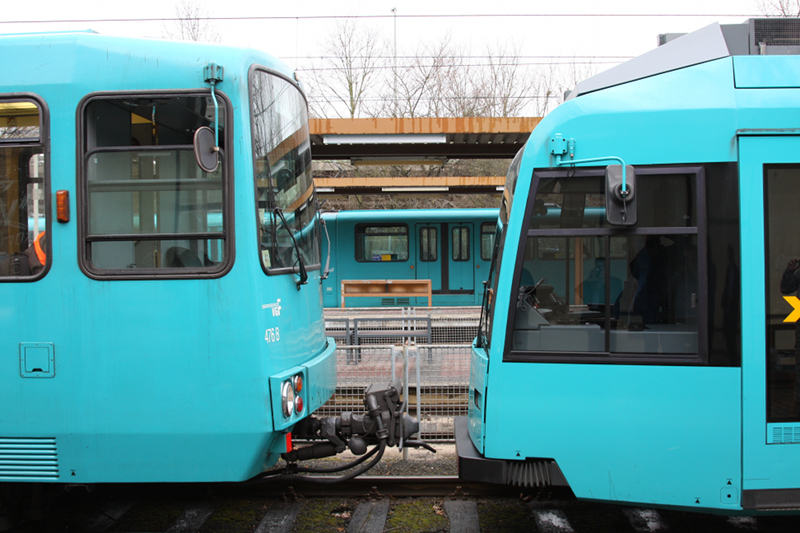
...but unable to couple up as the R type does not have any regular couplers ![]() .
.
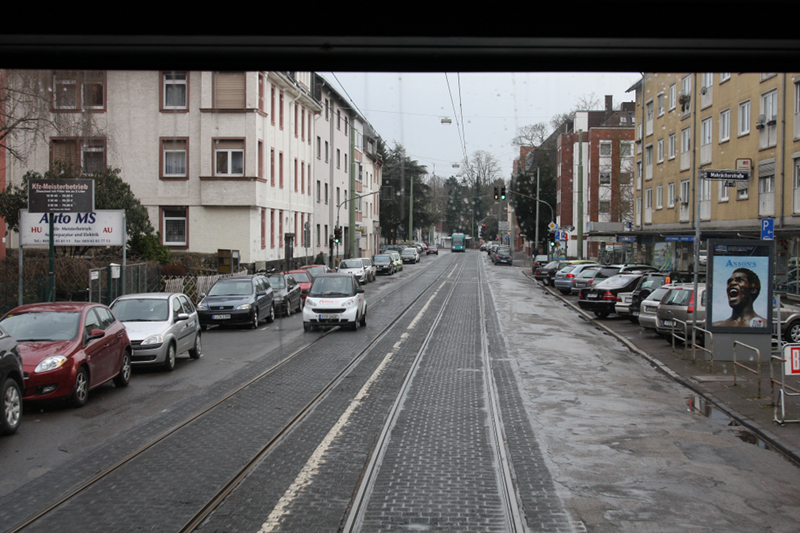
Travelling along Ginnheimer Landstraße, with the next line 16 service coming the other way in the distance.
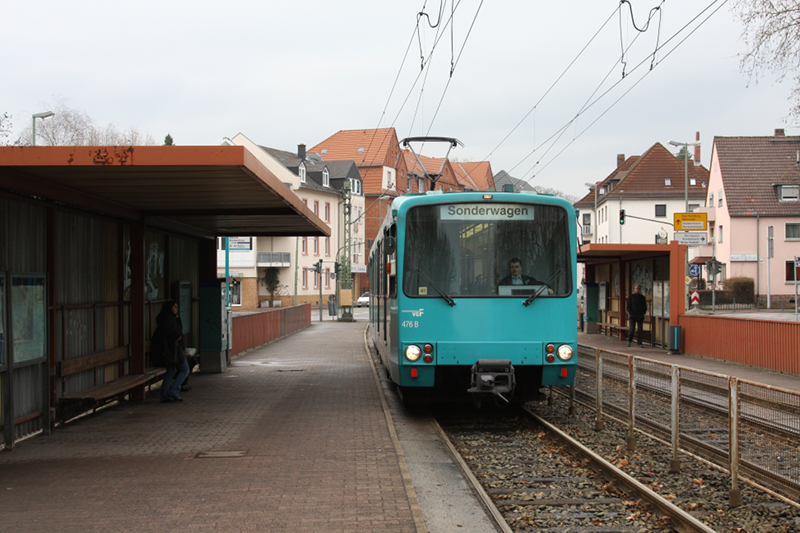
At Markuskrankenhaus (St. Marcus Hospital) a couple of passengers mistook us for a scheduled service once again. I wonder how the could have, though - not that much similarity between the R and S type trams which normally operate here and our U3 type car!
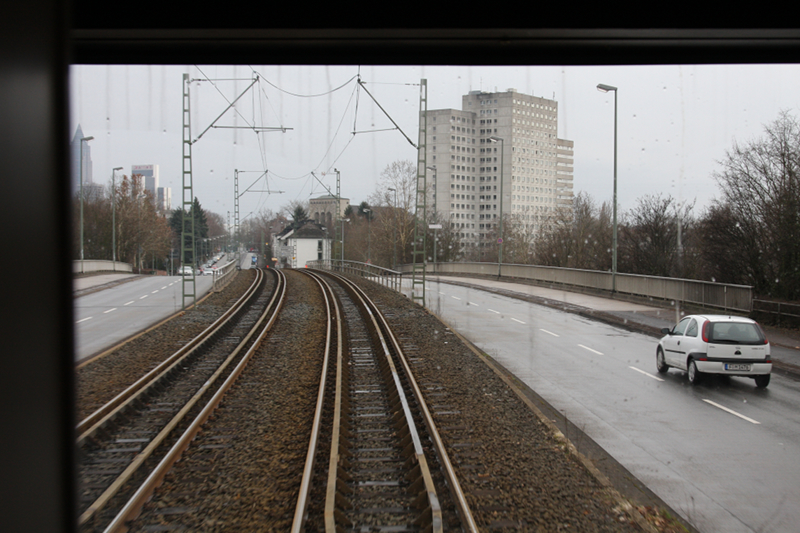
On the bridge over the A66 motorway. The high rise building in the distance to the right is a student house, if I am not mistaken.
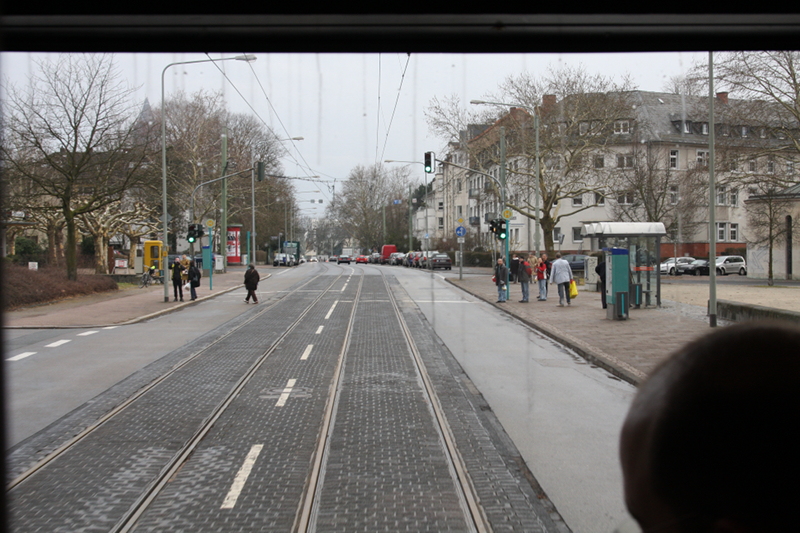
A couple of confused spectators at Frauenfriedenskirche...
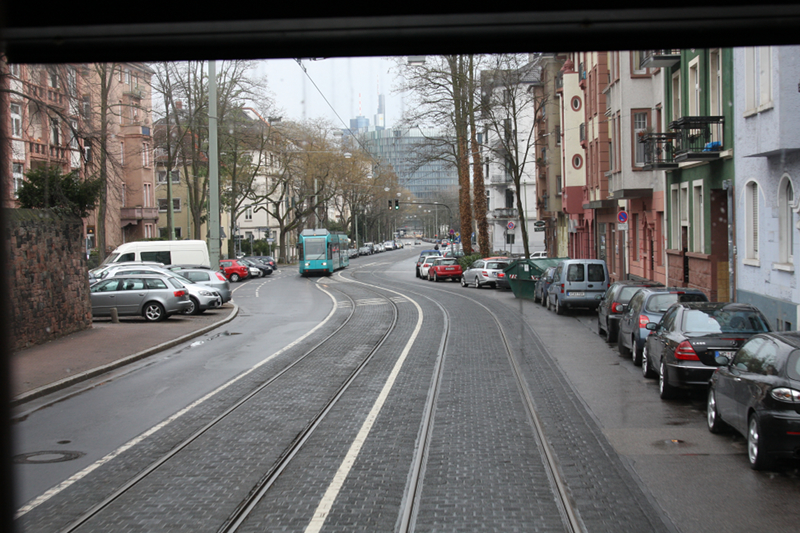
...and another R type tram on line 16 as we were travelling along Sophienstraße.
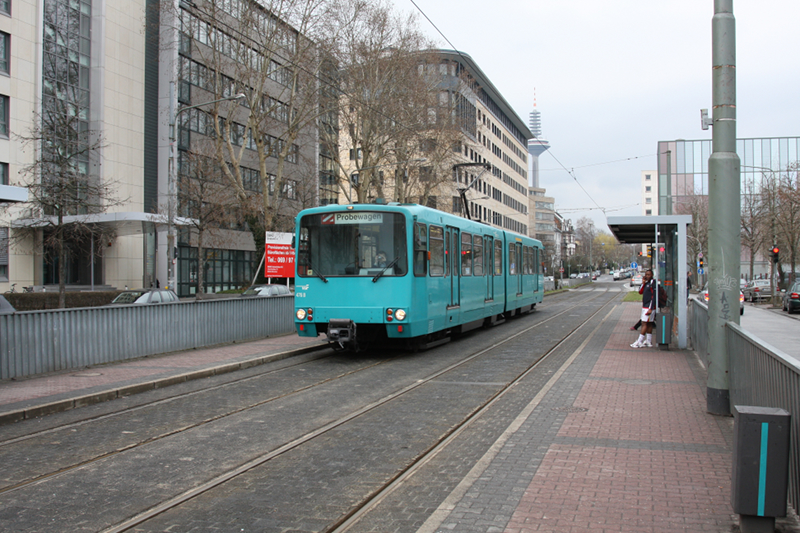
In a sense we had now visited Bockenheimer Warte on all three levels: light rail routes C and D and the tram line ![]() . The TV tower at Ginnheim is visible in the distance. The old university campus is located to the right rear of this position, and the university library is to the right.
. The TV tower at Ginnheim is visible in the distance. The old university campus is located to the right rear of this position, and the university library is to the right.
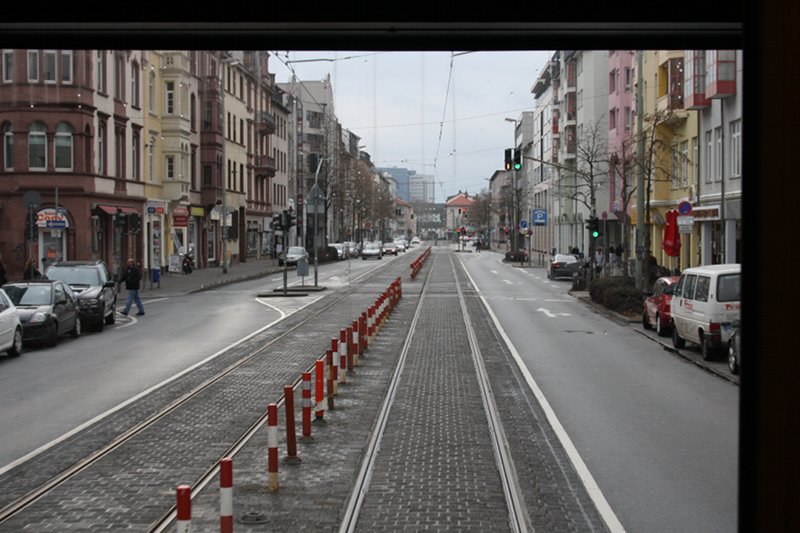
Proceeding along Adalbertstraße...
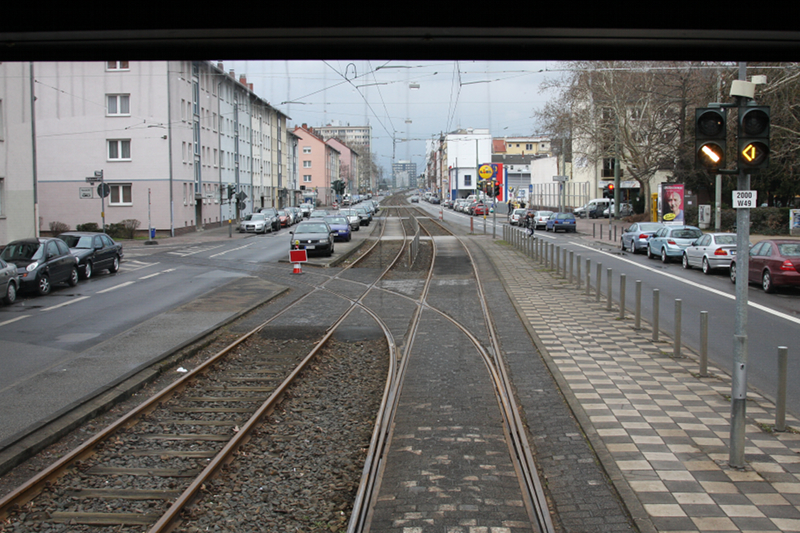
...and turning right into Schloßstraße in order to head back to Industriehof. This here is another connecting line used only for empty stock movements. The branch to the left is meant for the tram, as there is a reversing loop at Western Station, which in turn is located beyond the housing blocks to the left. This loop is used only in case of disruptions, though, but used to be a regular terminus until not too long ago. The points here have been set to the diverging branch as a default, which meant that we had to manually reset them.
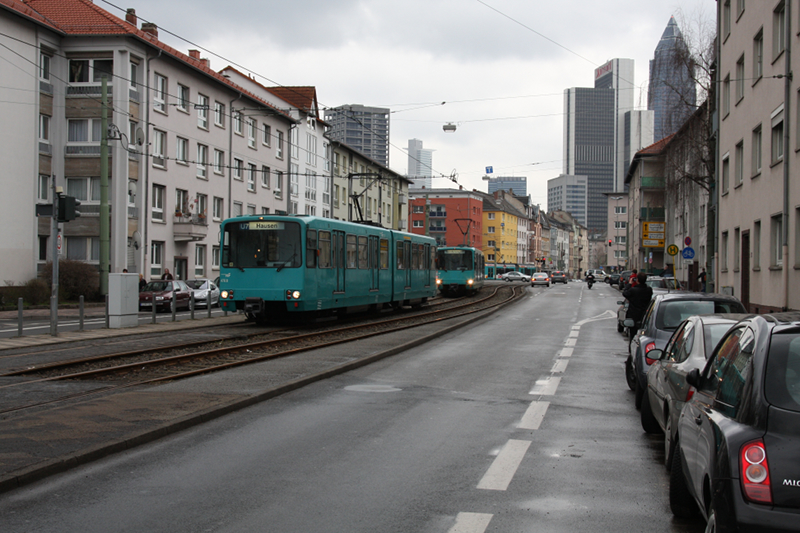
After waiting here at Kurfürstenplatz for several minutes the second car from our train showed up and proceeded to couple up again. The skyscraper to the right is the Trade Fair Tower ("Messeturm"), informally known as the "Pencil." We then set off again, crossing Breitenbachbrücke and approaching Industriehof.
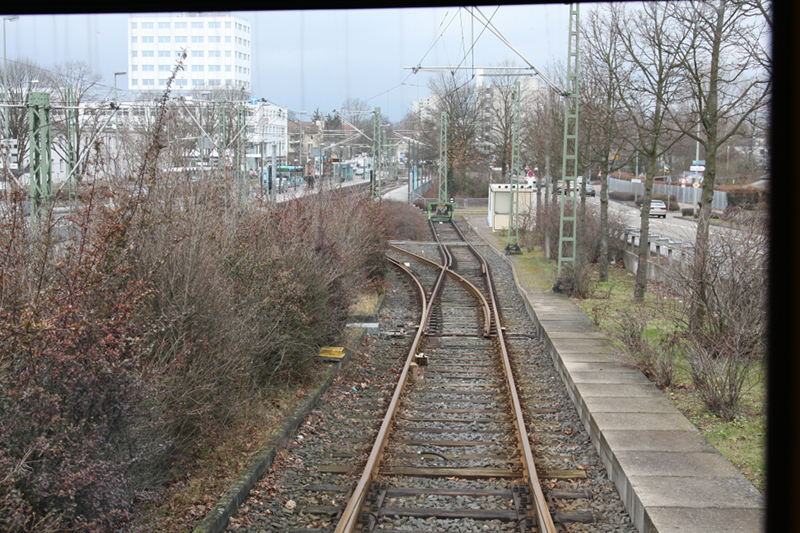
We've seen this junction at Industriehof before - but now we were using it as normal U6 and U7 trains would have back when they were operating out of the Gutleut depot near Central Station, whenever they had to travel to and from their lines.
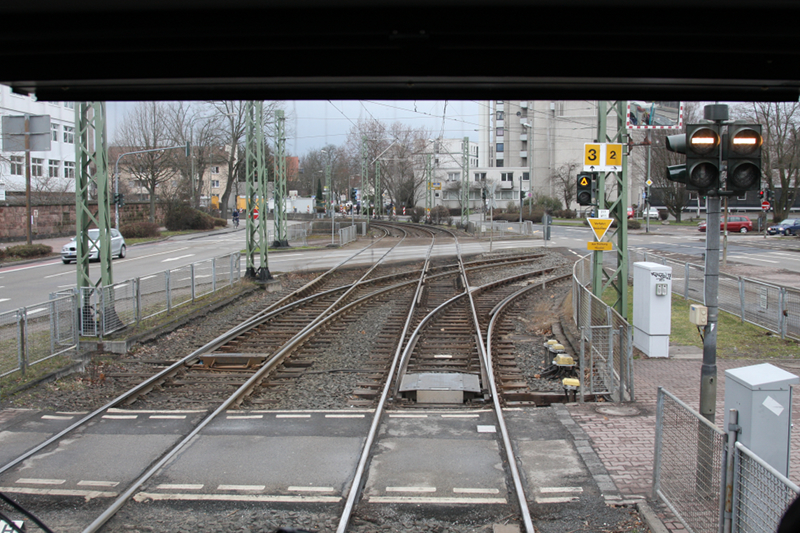
Last time we'd been here we were going to Hausen on the right, but now we would continue straight ahead along Friedrich-Wilhelm-von-Steuben-Straße. This branch is normally served by the U6 line.
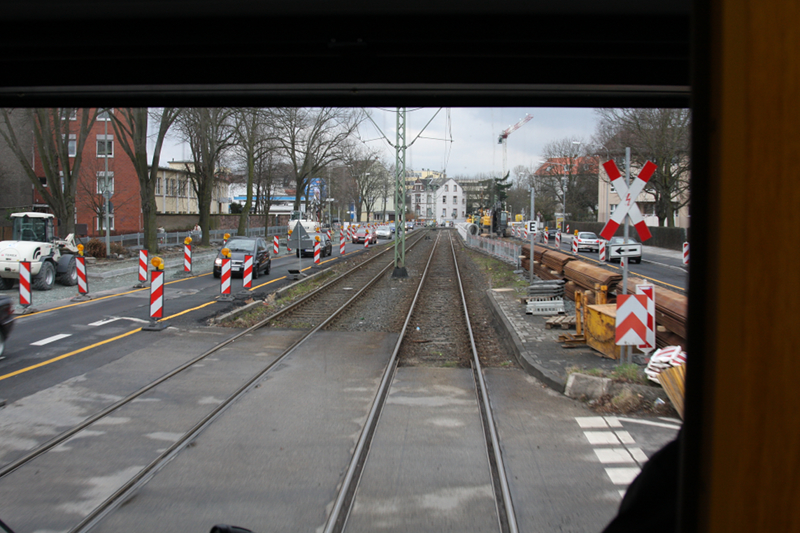
Some construction work is going on here at this time.
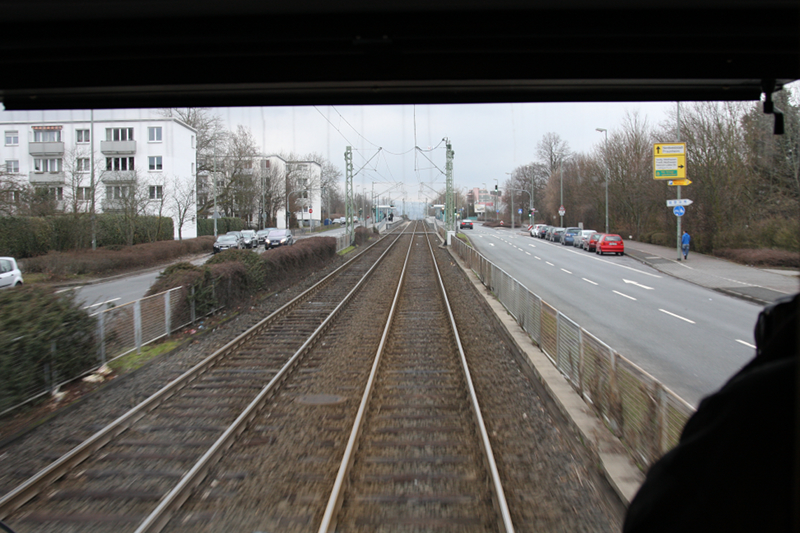
Speeding along Ludwig-Landmann-Straße...
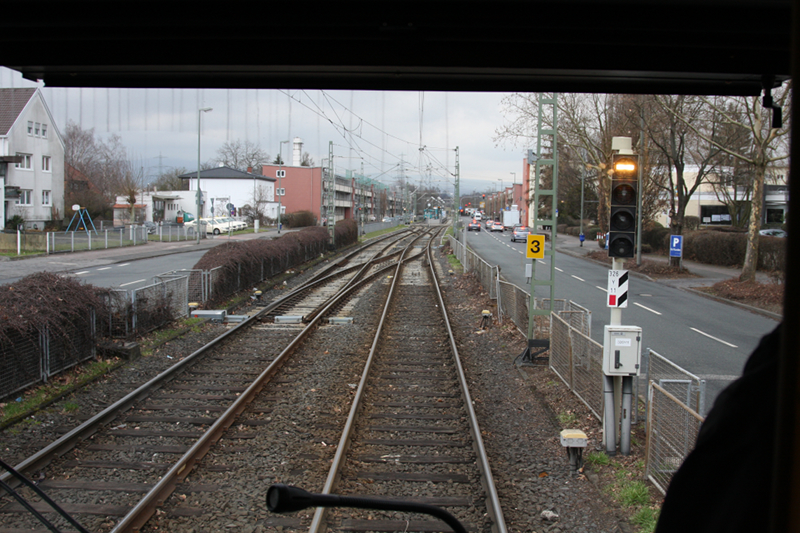
...we then split the train again at Friedhof Westhausen as we were planning to position them side by side in the turnback area at Heerstraße in the borough of Praunheim. This area is located beyond the actual terminus of the U6 line and no longer used in regular service.
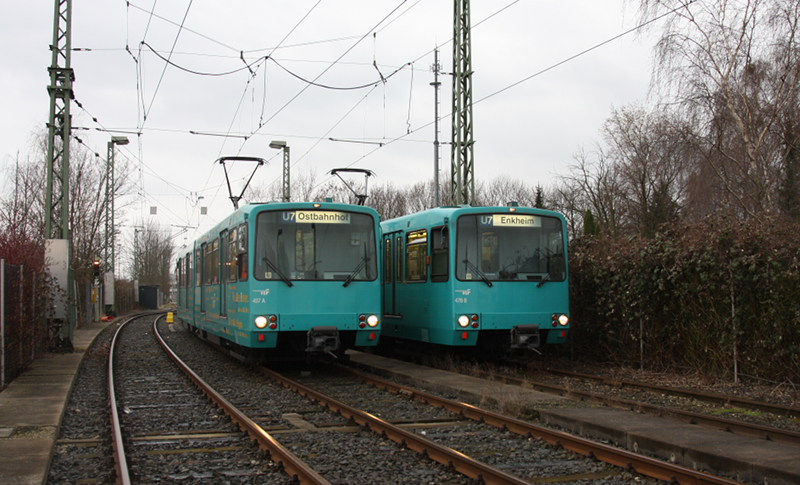
Side by side, and having fun with the rollsigns again ![]() .
.
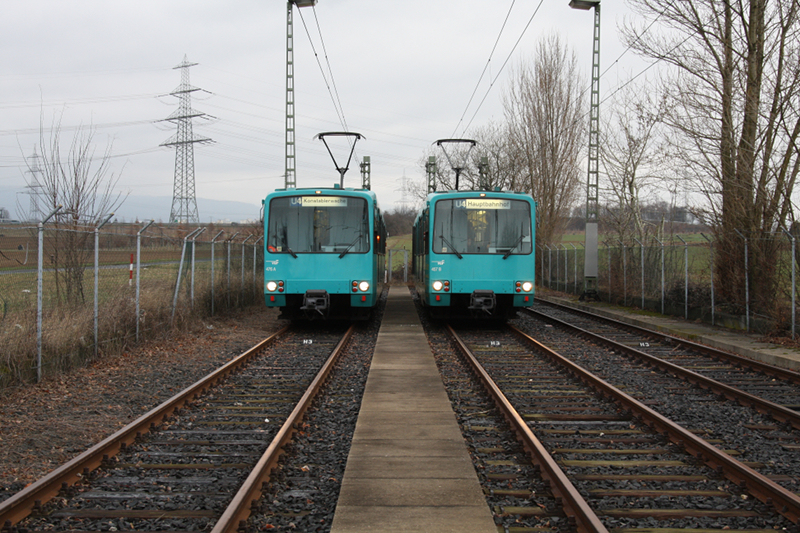
And the same pair of cars from the other end.
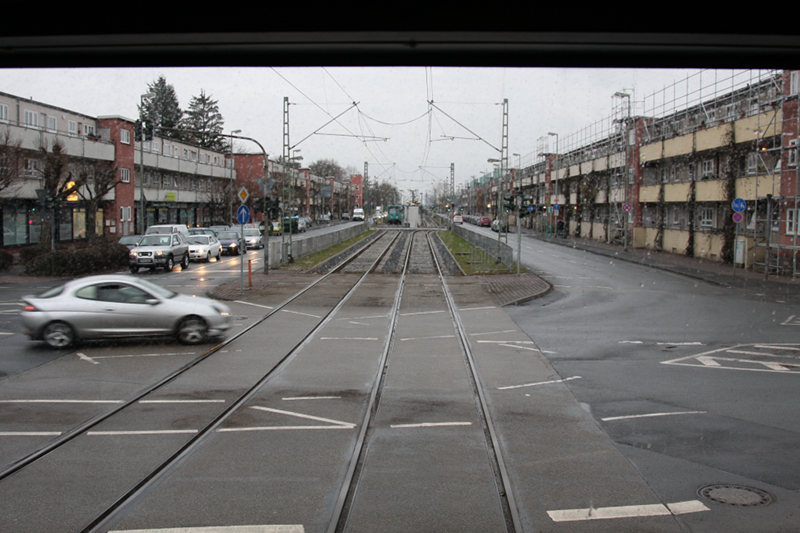
Our trip now drew to its end. We now crossed Heerstraße - the road going left to right - and returned to the station in order to couple up again. The storm we had recently took down the roof from the housing block to the right, explaining the scaffolding around it.
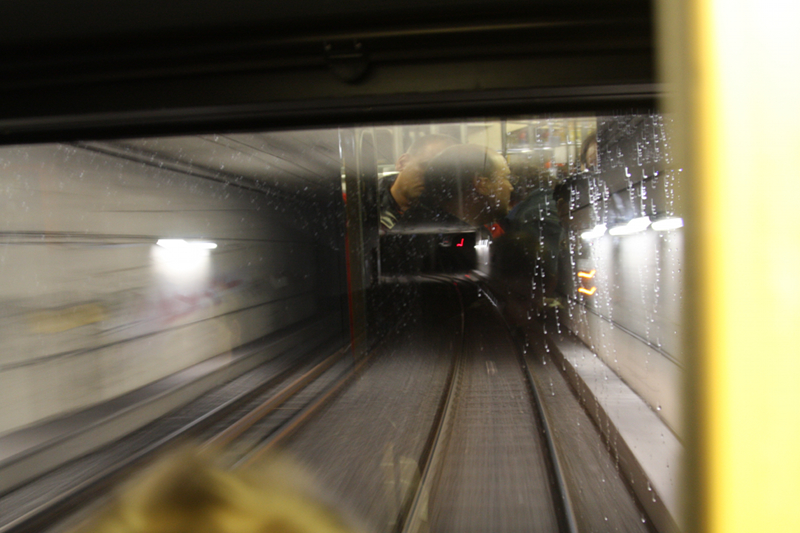
Diving back into the tunnel at Industriehof.
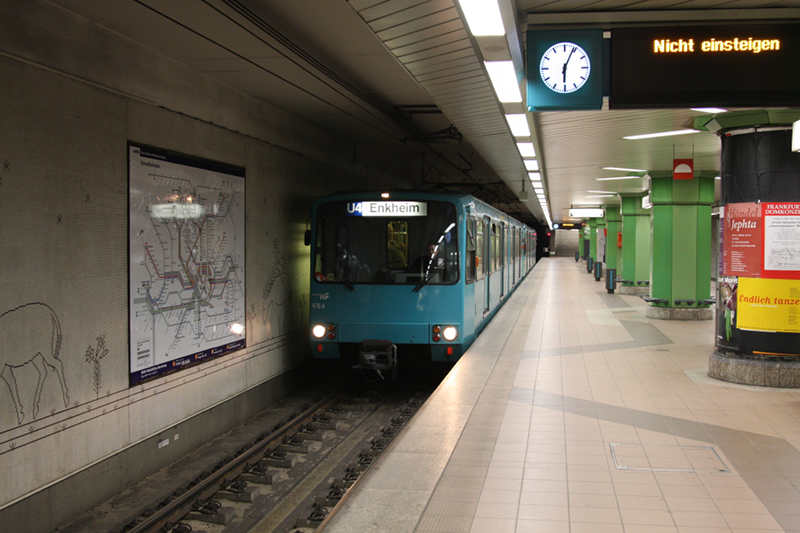
Our last photo stop was at Habsburgerallee...
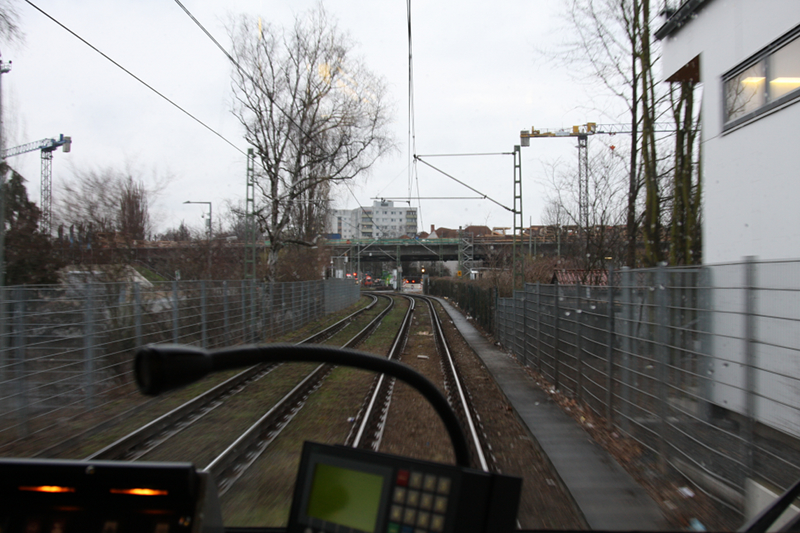
...and this last shot was taken after emerging from the tunnel between Eissporthalle and Johanna-Tesch-Platz, close to the Volksbank Stadium.
Well, then - I hope you enjoyed this report as much as I did the actual excursion! ![]()



1 Comment
Recommended Comments
Create an account or sign in to comment
You need to be a member in order to leave a comment
Create an account
Sign up for a new account in our community. It's easy!
Register a new accountSign in
Already have an account? Sign in here.
Sign In Now